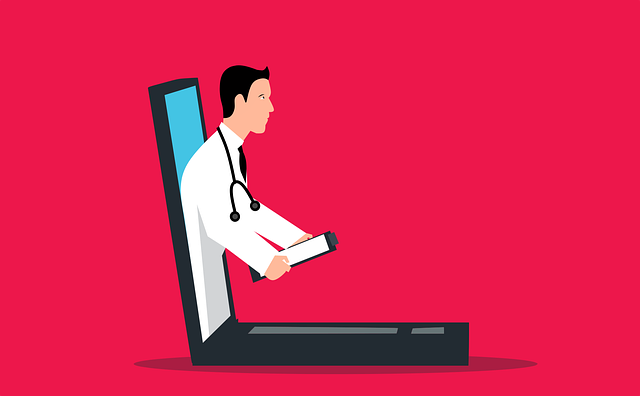Workers' Compensation and Liability Insurance are critical frameworks and tools for protecting employees and businesses from work-related injuries and illnesses. Liability Insurance, mandated in many regions, shields employers from significant financial burdens arising from medical expenses and income losses of injured workers. Employers must assess risks, implement robust safety protocols, and adhere to worker compensation regulations to prevent accidents and reduce liability claims. Effective risk management involves data analytics, comprehensive training programs, advanced inspection tools, and open communication channels. Case studies illustrate the impact of adequate Liability Insurance coverage in mitigating financial losses and ensuring business continuity following workplace incidents.
“Workers’ Compensation: Navigating Liability and Risk Management
In today’s dynamic work environment, understanding workers’ compensation and liability is paramount for businesses of all sizes. This comprehensive guide delves into the legal framework surrounding workers’ comp, focusing on its role in protecting employees and employers alike. We explore key aspects, including the value of liability insurance in risk mitigation, common workplace hazards, and the step-by-step process of handling compensation claims. Additionally, we examine real-world case studies, emerging trends, and best practices to ensure informed decision-making.”
Understanding Workers' Compensation: A Legal Overview

Workers’ Compensation is a legal framework designed to protect employees and their families in the event of work-related injuries or illnesses. It serves as a safety net, ensuring that workers receive medical coverage, wage replacement, and rehabilitation services without having to bear these costs personally. The primary goal is to facilitate a smooth transition for affected individuals back into the workforce.
This system places liability on employers to secure appropriate insurance, often in the form of Liability Insurance, to cover potential claims. By understanding their obligations under Workers’ Compensation laws, businesses can mitigate risks and ensure they are prepared to handle workplace incidents responsibly. This legal overview highlights the rights of employees and the responsibilities of employers, fostering a safer work environment for all.
The Role of Liability Insurance in Protecting Businesses

Liability insurance plays a pivotal role in protecting businesses from potential financial risks associated with workers’ compensation claims. In many jurisdictions, employers are legally obligated to carry such insurance to cover medical expenses and income loss for employees injured on the job. Without adequate liability coverage, businesses face significant financial burdens if an employee files a successful claim, leading to potential bankruptcy or severe economic strain.
This type of insurance acts as a shield, safeguarding businesses from costly legal battles and direct financial losses. It provides peace of mind, ensuring that companies can fulfill their legal obligations to employees while managing risks effectively. By assessing potential hazards and understanding the scope of coverage, employers can make informed decisions, mitigate risks, and maintain a safe work environment, ultimately fostering a positive relationship with their workforce.
Common Causes of Workplace Injuries and Illnesses

Workplace injuries and illnesses can arise from a variety of causes, each with its own potential impact on both employees and employers. Common scenarios include slips, trips, and falls, often caused by poor lighting, uneven floors, or wet surfaces—these accidents are not only painful but can also lead to significant liability issues for businesses.
Other prevalent reasons involve repetitive motion injuries, such as carpal tunnel syndrome, resulting from prolonged use of computers or heavy machinery. Additionally, exposure to hazardous materials like chemicals, noise, or unsafe working conditions contributes to a range of health issues, emphasizing the need for robust safety protocols and Liability Insurance to mitigate risks and protect all parties involved.
How Workers' Comp Claims Are Handled: A Step-by-Step Process

When a worker sustains an injury or develops an illness related to their job, they often look to workers’ compensation insurance for support and recovery. The process of filing a claim is structured to ensure fairness and prompt resolution. It begins with the injured worker reporting the incident to their employer and seeking medical attention. This immediate step is crucial as it triggers the employer’s obligation to report the injury or illness to the relevant workers’ compensation board within a specified time frame, usually within one to three days.
Next, the claim is formally filed, typically through an application submitted by the worker or their representative. The board reviews the claim and determines its validity, considering factors like medical evidence, employment history, and the relationship between work and the injury. If approved, benefits are awarded, which can include reimbursement for medical expenses, wage replacement during recovery, and vocational rehabilitation services to help workers return to the workforce. Liability insurance plays a significant role here, as it covers these compensation costs, safeguarding employers from financial burden while ensuring support for affected employees.
Benefits and Entitlements for Injured Employees

When an employee sustains an injury on the job, they are entitled to certain benefits and entitlements under workers’ compensation laws. These include medical coverage for all necessary treatments related to the work-related injury, as well as wage replacement during periods of disability. The extent of these benefits varies by jurisdiction but generally aims to support employees through a difficult time while ensuring they can access quality healthcare.
Additionally, employers are typically required to carry liability insurance to protect against potential claims and settlements arising from work-related injuries or diseases. This insurance helps cover legal costs and provides financial security for injured workers who may be unable to work or require extensive medical care. Understanding these rights and the role of liability insurance is crucial for both employees and employers to ensure a fair and supportive system for managing workplace injuries.
Employer Responsibilities: Prevention and Compliance

Employers have a legal obligation to ensure the safety and well-being of their employees, which involves a proactive approach to risk management and compliance with workers’ compensation regulations. This includes implementing robust health and safety programs, providing necessary training, and offering adequate personal protective equipment (PPE). By prioritizing prevention, employers can significantly reduce the risk of workplace injuries and illnesses, thereby lowering potential liability insurance claims.
Compliance with local, state, or national laws pertaining to worker safety is non-negotiable. Regular inspections, employee education on safety protocols, and prompt reporting of accidents or hazardous conditions are essential practices. Staying up-to-date with industry standards and best practices ensures employers meet their duty of care, minimizing financial exposure in the event of a claim related to liability insurance.
Key Factors in Determining Liability in On-the-Job Incidents

When determining liability in on-the-job incidents, several key factors come into play. The first and foremost consideration is the specific circumstances surrounding the incident. This includes a thorough investigation to uncover the sequence of events, identify any contributing factors, and assess the role of both the employee and employer. For instance, was the worker properly trained? Were there adequate safety protocols in place, and were they followed? Understanding these details is crucial for assigning responsibility.
Additionally, the type of industry and job duties involved play a significant role. Certain industries have inherent risks, and employers are expected to mitigate these through comprehensive risk assessments and appropriate Liability Insurance coverage. The level of supervision, emergency response procedures, and the availability of personal protective equipment (PPE) are also critical factors. By evaluating these elements, legal professionals can make informed decisions regarding liability and ensure that appropriate measures are taken to prevent future incidents.
Case Studies: Real-World Examples of Workers' Comp Claims

Workers’ Compensation and Liability Insurance play a pivotal role in protecting businesses from financial loss due to on-the-job injuries or illnesses. Case studies offer a compelling look at real-world scenarios where these claims have impacted organizations. For instance, consider a manufacturing company where a worker suffers severe hand injuries from a malfunctioning machine. The employee files a Workers’ Comp claim, resulting in medical expenses, lost wages, and potential permanent disability benefits. This not only affects the company’s bottom line but also its overall productivity and workplace culture.
Another scenario involves a construction site where a subcontractor is working when a structural collapse occurs due to improper safety measures. Several workers are injured, leading to multiple Workers’ Comp claims. The general contractor faces increased liability insurance premiums as a result of the incident, reflecting the importance of proper coverage and adherence to safety regulations. These case studies underscore the significance of comprehensive Liability Insurance in mitigating risks associated with workplace accidents and ensuring businesses can navigate such challenges effectively.
Trends and Best Practices in Managing Workplace Risks

In today’s dynamic business landscape, managing workplace risks is more than just a legal requirement—it’s a strategic imperative. Trends in worker compensation and liability highlight the growing importance of proactive risk management. One notable trend is the shift towards data-driven approaches, where companies leverage advanced analytics to identify potential hazards and predict injury patterns. This enables them to implement targeted interventions before incidents occur.
Best practices in managing workplace risks encompass a multi-faceted approach. Employers are increasingly adopting comprehensive safety programs that incorporate regular training sessions, robust inspection protocols, and the implementation of cutting-edge safety technologies. Additionally, fostering a culture of open communication where employees feel empowered to report concerns without fear of reprisal is instrumental in identifying and mitigating risks effectively. Furthermore, staying updated with evolving regulations and industry standards ensures compliance and reduces potential exposure to liability insurance claims.
